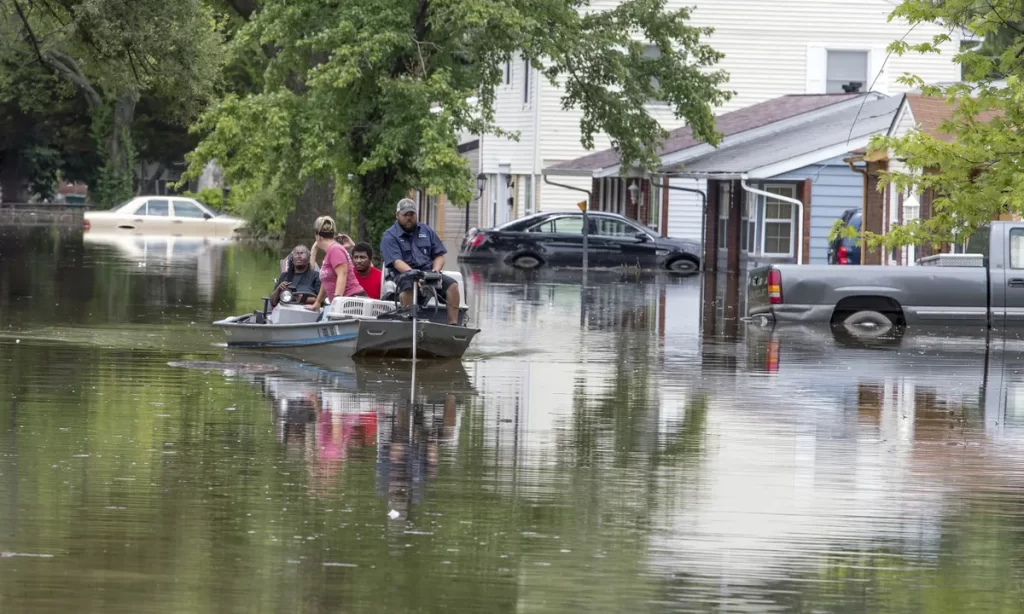Flood insurance provides financial relief to homeowners after experiencing flooding, like any other insurance policy would. An insured pays a premium and in exchange, receives money for damages covered under their policy up to an agreed-upon deductible amount.
Homeowners in high-risk flood zones usually need flood insurance; those living in lower and moderate risk zones may wish to purchase coverage too. Learn how it works and which options are available.
NFIP
No matter your risk for flooding, the National Flood Insurance Program offers coverage options that could protect your property from it. Speak with your agent about these policies’ features such as coverage amounts and deductibles to determine their suitability for you.
NFIP flood insurance protects structures like homes, condos and commercial buildings as well as their contents from any flooding that might arise, as well as machinery such as elevators, air conditioning units with exterior compressors (including exterior compressors for air conditioners ) clothes washers/dryers located above the first floor of homes or buildings.
NFIP offers two forms of flood insurance coverage for homeowners: standard NFIP policies and preferred risk policies. Your agent can help you decide on the policy that’s right for you by reviewing your community’s participation status in the NFIP Community Status Book. Please be aware that mortgage lenders often require homeowners to purchase at least some form of flood coverage; in such a situation, standard NFIP policies may be all that’s available.
Preferred Risk Policy
Insurance policies come in various forms; one type is preferred risk policies which provide cost-cutting protection for buildings and contents, including walls, floors, furniture, rugs electronics etc that could be damaged from flooding or outside water sources. If you live in an area with moderate to low flood risks then these may qualify as being eligible.
Preferred risk policies are available to residents living in communities participating in the National Flood Insurance Program who fall within its B, C or X flood zone maps.
These policies not only offer basic building and contents coverage options, but they also enable you to choose your deductible amount – something which will impact the cost of premiums as higher deductibles mean the insurance company must pay less per claim. You could even qualify for mitigation discounts by taking steps such as elevating machinery or equipment, elevating home, installing proper flood openings etc.
Coverage Options
Home, condo and renters insurance generally don’t cover flood damage, so homeowners in moderate to high risk zones should look into purchasing separate flood policies from either the National Flood Insurance Program or private carriers.
NFIP’s new Risk Rating 2.0 system generates more accurate insurance premiums that reflect individual property’s risks. It takes into account factors like frequency of flooding events in an area and distance to water sources as well as replacement cost value of replacement property.
This system rewards property owners who take proactive measures to mitigate risk, such as elevating structures or installing flood openings. Such discounts may reduce homeowner premiums by as much as 18 percent.
Cost
Flood Insurance policies vary significantly in cost depending on where your property is located and its overall flood risk. An easy way to estimate this expense is by considering how much it would cost to rebuild your home and its contents under worst-case scenarios; contact your homeowner’s insurer for an estimate of their premium costs.
Many homeowners and renters assume their homeowner’s or landlord’s insurance will protect against flood damage; however, this is often not the case and most policies exclude this type of loss. Residents living in high-risk zones are legally mandated to purchase flood insurance while moderate-to low-risk zones should consider doing so as it can help safeguard possessions against catastrophic loss.












More Stories
The Insurance Puzzle: Protecting Your Remote Work and Digital Nomad Life
Insurance for Your Renewable Energy Project: A Guide to Protecting Your Investment
How Blockchain Technology is Transforming Claims Processing and Fraud Detection